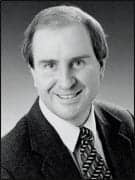At Clayton Sleep Institute (CSI) in St Louis, sleep lab beds are rarely empty overnight. Among several reasons that CSI can accomplish this feat is a brilliantly simple solution that other sleep centers can implement: a “standby list” of patients who are contacted when there are last-minute openings—caused by cancellations or no-shows—for a sleep study that night.
Joseph Ojile, MD, FCCP, DABSM, founder and CEO of CSI, shared the standby list concept at the 14th Annual Updates in Sleep Medicine conference. Later, I asked him what sparked the idea. Like most aspects of healthcare, the work in sleep medicine typically comes in fits and starts, he explained. “There are times when you’re just hoping there are more sleep tests coming in, and other times when you’re backlogged so much that you’re embarrassed,” he told me over the phone. The standby list provides “a way to even out your flow,” he said.
Maintaining a standby list benefits patients too because during busy seasons it gives them a chance to shorten their wait times. “Most of the time, patients don’t want to wait,” Ojile said. “When their minds are made up [they need and agree to an in-lab sleep study], they want the test done tonight.” Ojile mentions the list option to patients during their face-to-face appointments with him as a potential way to have their sleep study completed more quickly. For those who sign up for the list, “the vast majority of them will have the opportunity to move up,” he said.

Sree Roy
[email protected]
If you’ve ever arrived to the airport several hours early and requested a standby seat on an earlier flight, you already have a grasp of the patient-friendliness of the concept. Just as you retain the original flight’s confirmed seat until you get a confirmed seat on an earlier departure, patients retain their scheduled sleep lab appointments until receiving a call that an earlier night has become available. And if a patient declines the earlier opening, he or she keeps the original appointment and the sleep center may call the next person on the standby list.
“We only get one chance per night forever to fill that bed. When that night’s over, we can never make that up,” Ojile noted. The sleep center is on the hook for the overhead costs—electricity, mortgage/rent, salaries, etc—regardless of whether every bed is filled, so it makes sense to get the most use out of the space. “We need to steward that resource in a proper and helpful way,” Ojile said.
Sree Roy is editor of Sleep Review.




